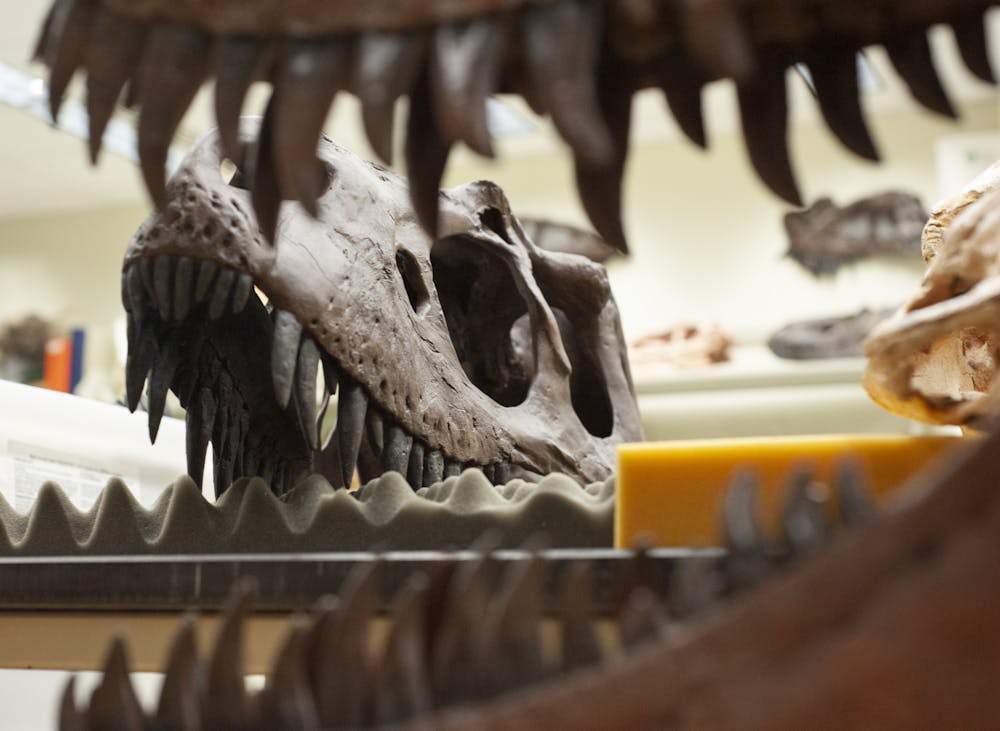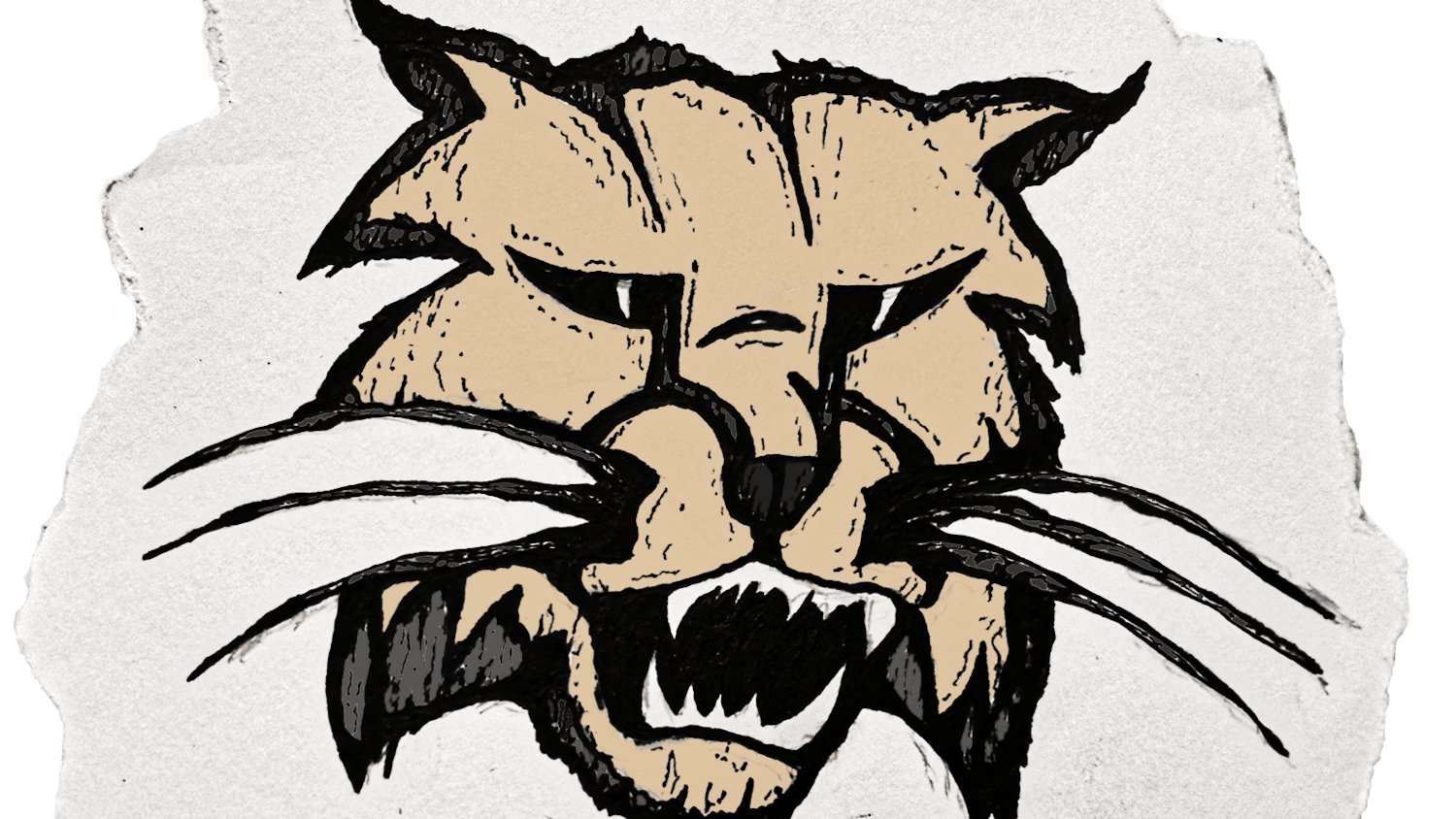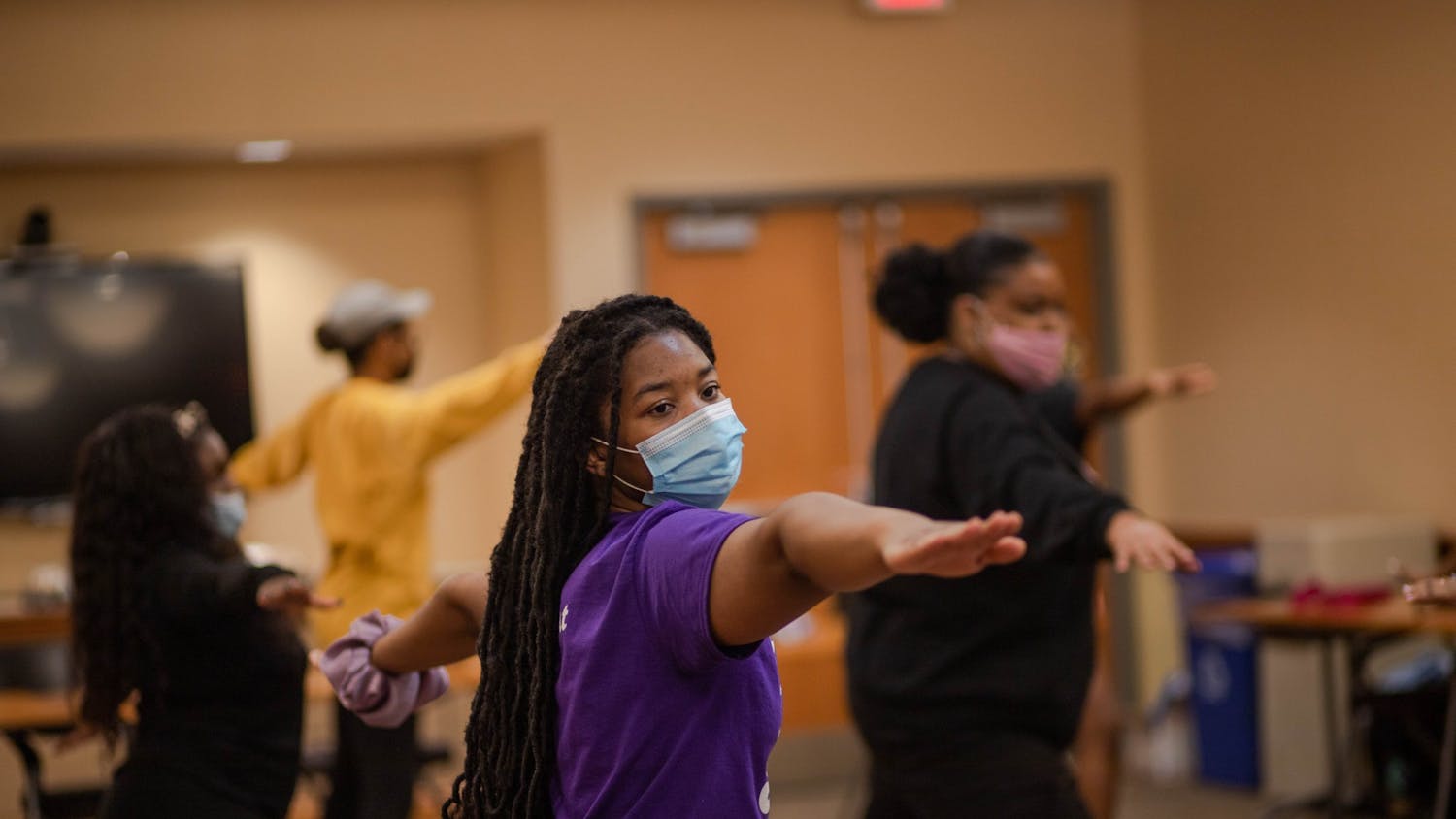Tucked away in the buildings between Bromley and Boyd is an unassuming building. Inside, however, lies the future of the past.
Lawrence Witmer, a professor of anatomy and the Chang Ying-Chien professor of paleontology at Ohio University, said he was a dinosaur kid who never grew out of it. His life-long love of the extinct has made him a pioneer paleontologist, completing his breakthrough research in the Life Sciences Building at OU.
"I teach human anatomy," Witmer said. "I look at the anatomy of these other animals, but we all have the same parts. We're all part of this evolutionary tree. And so we have the same parts as dinosaurs do, just arranged a little differently."
Witmer's office is full of bookshelves, each one tightly packed with books, and each spare space available boasts fossils. Some are real, like the number of bird skeletons and a few human skulls, and the rest are reconstructions. When he's not teaching anatomy or working in office, he is across the hall in the Witmer Lab.
The lab consists of several rooms, and every available space is covered in fossils. One adjacent room holds boxes of bird bones; in another, a turtle shell is being slowly reconstructed using carefully placed Elmer's glue. A small closet holds tanks full of flesh-eating beetles that remove dried muscle and flesh more skillfully than any human can, and a walk-in freezer holds animal corpses that haven't met the bugs yet. A bobcat in a bag, a rhino head and several "crocsicles," as Witmer calls the frozen crocodiles that haunt the freezer.
In the main lab are dozens of prehistoric heads. Parasaurolophus skulls, T-Rex jaw bones and recreated dinosaur organs lie carefully arranged in the main lab space, with several offshoot rooms containing non-extinct fossils.
"This is the brain cavity right in here," said Witmer of a 3D-printed dinosaur brain. "That's where the brain was in life. And then what we could do with software is, in a sense, generate that, then we can 3D print it."
Many of the dinosaur bones featured in the lab are replicas, including one life-size copy of the original T-Rex skeleton ever found. Witmer said he and his team examine the bones compared to non-extinct birds and reptiles to piece together how dinosaurs worked.
"What winds up being is that we're very interested in the marks on the bones that are left by the soft tissues," Witmer said. "So how does the brain and the eyeballs and the jaw muscles write their signatures into the bones? And so part of our job is to read those signatures, to learn the language of the bones."
To read these languages, Witmer and his fellow lab workers use innovative CT scanning to be able to replicate animals' soft tissue systems onto a computer. Witmer said the lab partners with a wildlife rehabilitation program that gives the lab the remains of animals who die in their care.
DJ Morgan, a PhD student completing his fifth year working in the lab, said he is working on identifying the blood vessels in a reticulated python skull this week. To do this, he must inject a barium-latex solution delicately into the snake carcass, allowing it to light up under the CT scan, which he said takes place at The Ridges.
"When we've been able to actually visualize what these things look like, inside of the animal that a lot of people haven't seen before is really cool," Morgan said. "Looking at fossils and being able to be like, 'Oh, I think I recognize what that hole is for.' So that's, that's kind of like one of the coolest things for me to say."
From there, the animals are dissected to compare with the scans. Once these CT scans are transferred to the computer, Morgan said lab staff can explore the 3D digital replica to help uncover mysteries about animal anatomy and translate that to the dinosaur bones in the lab.
"Some cases, they (bones) speak with eloquence about what the soft tissues are, in other cases, they keep their secrets, so that's part of our job is to try to figure out what the fossil bones are telling us," said Witmer.
Sei Tada, a PhD student from Tokyo studying paleontology, helps decode what the bones are whispering. Tada works in the lab analyzing the scanned images of living animals compared to the bones of extinct animals. Recently, he has been analyzing the blood vessels of reptiles, particularly turtles, to learn about extinct animals' soft tissue in their heads.
"Blood vessels around the head region might be very useful to carry the nutrition around the brain, and also very important for heat exchange," Tada said.
This research is similar to Witmer's National Geographic spread a few years back, where he discerned how blood vessels in certain dinosaurs' brains acted as quasi-A.C. units so the animals would not overheat given their large body size. This is just one instance of Witmer Lab workers uncovering how extinct species functioned and lived.
"It definitely gives you some inspiration to look around and see all kinds of crazy fossil animals that used to live on this planet," Morgan said.
Witmer is considered one of the world's leading experts on soft tissue skull anatomy in extinct animals, according to Ohio Innovation Exchange, particularly dinosaurs and pterosaurs. Witmer said that over the summer, he was involved in three documentaries, including one from BBC, and he has his National Geographic spread excitedly blown up into large prints hanging on the lab's wall.
Morgan said he has felt lucky to work with such a renowned pioneer in the field and that working with his colleagues is his favorite part of the job.
"Everyone sees the world in a unique way," Morgan said. "No two people see the same thing the same way, so having discussions about research topics that we're doing and things like that, we each bring our own unique perspective."
Tada said the collaborative part of his job was also his favorite. Despite all of the amazing scientific breakthroughs and prehistoric understandings that emerge from the lab, Tada said the collective successes from the relationships in the lab are the most important in uncovering the past.
"Talking with other people, like DJ and Larry, will make a new hypothesis or new idea," Tada said. "Especially if that idea is new or that idea is not known to the world, it's really good. Nobody knows that, and we made that. We find a new page of life history on the earth, and it's really exciting."
Editor-in-Chief






